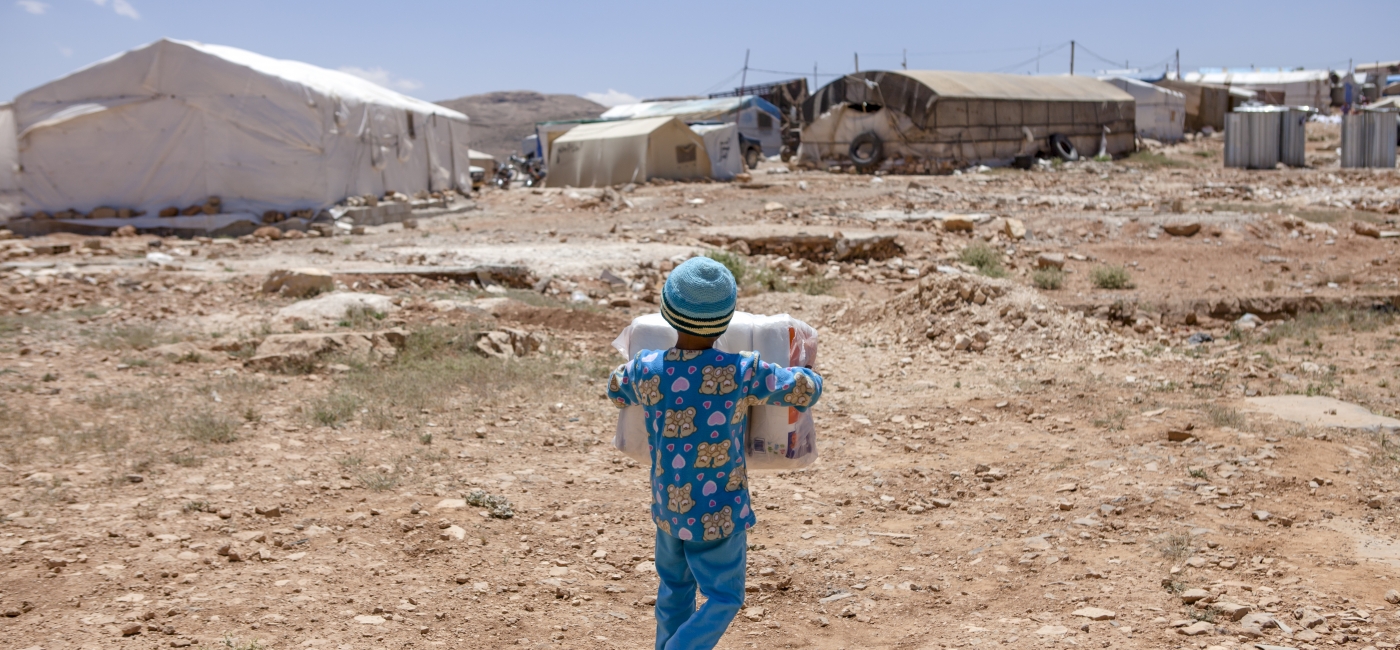More than a decade since the conflict in Syria began, the number of Syrians at risk of hunger has reached record high levels. The average cost of food in the country has, for months, been the highest since monitoring began.
An estimated 12.4 million people – about 60% of Syria’s population – suffer from food insecurity. This represents a 57% increase since 2019 and is the “highest number ever recorded in the history of Syria,” according to the World Food Program.
Syria faces multiple, interlinked crises. While active conflict has abated somewhat over the past year, rampant inflation and a severely struggling economy have increased needs to the point that they are outpacing families’ abilities to cope.
Every day, Syrians can afford to buy less of what they need to survive. Their incomes and savings are declining in value as the costs of necessary goods – water, food, fuel, electricity – are increasing, becoming out of reach. On average, households are now spending 50% more than their incomes.
Many Syrians depend on food distributions to survive.
Families can no longer afford the fuel to run generators to power their homes, transport, and water systems. Across Syria, many people have less than four hours of public electricity per day. Higher fuel prices mean transport and daily labor is more expensive. Farmers have less money to plant their fields, while it costs more to irrigate their crops and transport their harvests to market.
Russia and Ukraine are among the most important grain exporters for the Middle East. According to the United Nations, the conflict in Ukraine could lead to a shortage of wheat supplies to the region. They report that Syria has already reacted by rationing its grain reserves, which has impacted prices for basic foods, such as bread and flour.
Environmental shocks, including record low rainfall, are also driving hunger. This year, Syria faced the worst drought in 70 years, crippling the expected harvest. Wheat production in 2021 was estimated to be about 1.045 million tons in 2021, down from 2.8 million in 2020, and only a quarter of the pre-crisis average.
Limited rainfall, as well as the decimated water infrastructure throughout the country, means that growing capacity – and the costs for farmers to try and make a living – is intolerably high.
This field, normally sowed with wheat, lies empty because of the severe drought in Syria.
ACTION AGAINST HUNGER’S WORK IN SYRIA
Action Against Hunger has been working in Syria since 2008. We work to reduce hunger and health risks among the most vulnerable communities in Syria through both emergency lifesaving interventions and longer-term, sustainable resilience-building support.
Last year, we supported 1.3 million people across Syria by strengthening access to safe water and sanitation, improving health and education facilities, and providing opportunities to earn an income and provide food for their families.
Action Against Hunger teams are helping to rehabilitate damaged water points.
CALLING FOR SUSTAINABLE SOLUTIONS
This year, 14.6 million people require humanitarian aid to meet their basic needs. Syrians face their greatest needs at a point when the world’s attention and funding is declining. We urge global governments to continue and increase their support for Syrians.
With needs rising, early recovery and resilience-focused solutions are required to help Syrians restore hope, dignity, and self-reliance. Longer-term, multi-year, and flexible funding can enable humanitarian actors like Action Against Hunger to respond to both immediate emergency needs and to lay the groundwork for sustainable solutions.
This work must include restoring infrastructure and increasing civilian access to basic services such as water networks, pipelines, irrigation networks, and pumping stations as well as restoring and maintaining education and public health facilities. It requires support for longer-term sustainable livelihoods and food production solutions that help people earn a living and afford more and higher quality food to starve off malnutrition and reduce reliance on emergency aid. Doing so in a complementary and integrated way can do more to that support for Syrians is more sustainable, cost-efficient, and effective.


